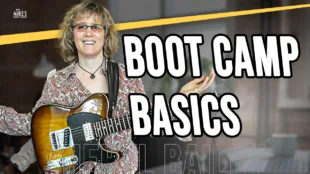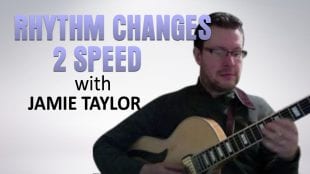Practice Scales and Arpeggios
Scales and arpeggios are the building blocks of jazz guitar playing. By practicing scales and arpeggios, you’ll improve your finger strength, dexterity, and accuracy. They also help you to develop a sense of harmony and melody, which is essential for jazz guitar playing.
Start by practicing major, minor, and dominant scales, as well as the corresponding arpeggios. Focus on playing them in different positions and voicings, and experiment with different rhythms and tempos. Remember to practice with a metronome to develop your timing and accuracy.
Recommended Fundamental Courses
Learn Jazz Standards
Learning jazz standards is an excellent way to improve jazz guitar fundamentals. Jazz standards are classic songs that are frequently played in jazz performances, and they are a great way to develop your skills in playing chord progressions, improvisation, and phrasing.
To learn jazz standards, start by selecting a few standards that you enjoy and learning the melody and chords. Then, practice playing the chords in different positions and voicings, and experiment with improvisation over the chord progressions.
As you become more comfortable with the standards, try transcribing solos from your favorite jazz guitarists and incorporating their phrasing and techniques into your own playing.
Jazz Standards for the Early Jazz Guitarist
Practice Sight Reading
Sight reading is the ability to read and play music on sight, without prior rehearsal or practice. It’s an essential skill for any jazz guitarist, as it allows you to quickly learn and play new songs and arrangements.
To practice sight reading, start by selecting a piece of music that is at your level, and try playing it without prior practice. Focus on playing with accuracy and timing, rather than speed, and use a metronome to help you keep a steady beat.
As you become more comfortable with sight reading, try practicing with different styles and genres of music, and gradually increase the difficulty of the music that you’re playing.
Sight Reading Courses
Improving jazz guitar fundamentals requires a combination of practice, learning jazz standards, and sight reading. By practicing scales and arpeggios, learning jazz standards, and practicing sight reading, you’ll develop the technical skills and musical knowledge necessary to become a successful jazz guitarist.
















